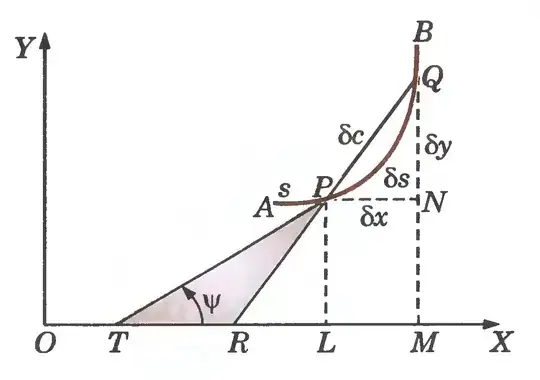
Premise 1: Line is composed of points.
Premise 2: Each point is associated with specific co-ordinates (x,y).
Premise 3: Lines of equal length have equal number of points. Lines of greater length have greater number of points.
Premise 4: Each value of x in the function f(x) gives a single value of y.
Premise 5: Each point (x,0) between L and M is associated with a unique point of (x,y) according to the function y = f(x). So, each point on the length LM has a unique single partner on the arc PQ. Hence, number of points on the arc is equal to number of points on the line LM. Length LM = Length of arc PQ.
Conclusion: The above analysis seems to conclude length of LM to be equal to length of arc PQ, which is definitely wrong as evident from the figure itself.
So, is length of arc PQ greater than LM?
The figure has been extracted from the book "Higher Engineering Mathematics" by Dr.B.S.Grewal.